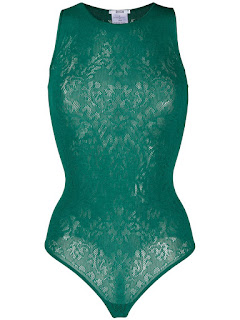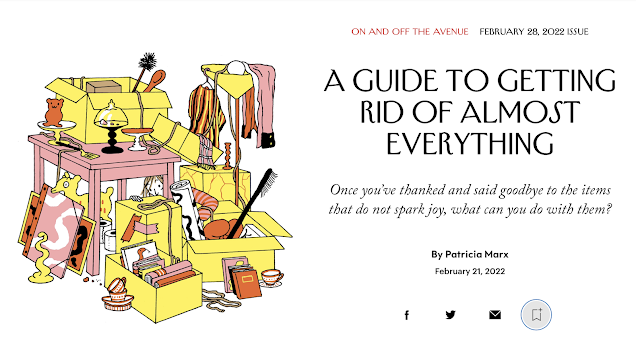Getting and Spending: "Investments" and other fallacies
Today, another post in the series "Getting and Spending", in which I discuss a polarity: the detrimental vs. delightful aspects of consumption in the present day.
I often hear women, and even more often, salespersons, apply two faux-economic strategies to justify a purchase:
1. "It's an an investment"
The definition of investment is "the action or process of investing money for profit". Leaving aside the Birkin resellers, how much of what the typical woman buys can be sold for profit?
When salespersons or stylists talk about "investment dressing" they are not referring to profit (or loss) but to intangibles such as pleasure or prestige, to justify the cost. This is value, not investment, and though intangibles are part of the value assessment, we need to face facts. (See my post on the buying something too fabulous, which then returns lousy value.)
2. "The Cost Per Wear will be pennies"
The CPW rationalization might prove true, but once outside your usual style, palette and budget, you have sailed into the CPW Bermuda Triangle.
CPW works if you apply the principle only to something you have data about—for example, the specific jeans you already know and love. But beware if you find yourself justifying a big or idiosyncratic purchase by invoking CPW.
Oh, do I have experience here: a Wolford lace bodysuit that ran after three wears; a pair of earrings so heavy they made me grimace within five minutes; thin-soled metallic-silver leather booties that could not stand up to walking, let alone rain.
In my business-wear days, I bought a secondhand Chanel jacket because, you know, a classic. However, it was too short in the body; in the consignment shop, I had only looked at sleeve length. It thrilled only my closet for months, until I went to another boutique and asked the owner to find a bottom piece that made it work.
Whether it's from the Sally Ann or Saks, sunk costs sting. At least with thrift finds you can re-donate, and look at the cost as your contribution.
I often hear women, and even more often, salespersons, apply two faux-economic strategies to justify a purchase:
1. "It's an an investment"
The definition of investment is "the action or process of investing money for profit". Leaving aside the Birkin resellers, how much of what the typical woman buys can be sold for profit?
When salespersons or stylists talk about "investment dressing" they are not referring to profit (or loss) but to intangibles such as pleasure or prestige, to justify the cost. This is value, not investment, and though intangibles are part of the value assessment, we need to face facts. (See my post on the buying something too fabulous, which then returns lousy value.)
2. "The Cost Per Wear will be pennies"
The CPW rationalization might prove true, but once outside your usual style, palette and budget, you have sailed into the CPW Bermuda Triangle.
CPW works if you apply the principle only to something you have data about—for example, the specific jeans you already know and love. But beware if you find yourself justifying a big or idiosyncratic purchase by invoking CPW.
 |
| Wolford "Isabella" bodysuit |
Oh, do I have experience here: a Wolford lace bodysuit that ran after three wears; a pair of earrings so heavy they made me grimace within five minutes; thin-soled metallic-silver leather booties that could not stand up to walking, let alone rain.
I believed CPW was an iron-clad criterion until I noticed the inverse relationship between cost and actual wear for some buys, and saw them for what they were, a fragile luxury (bodysuit); someone else's idea of what's wearable (heavy earrings); or a wine-before-shopping-with-girlfriend mistake (booties).
There is another investment concept no salesperson will mention—and we should know it.
Sunk cost and its attendant error
75% of the time at best, the item of clothing is not an investment, it is a sunk cost.
This dispiriting accounting term is exactly what it sounds like: a cost that cannot be recouped, and the value it provides is subjective. (For example, you have a five-year old coat that you love; you hope it never wears out. But if you took that coat to a consignment store, you might earn only $40 for it if they even agree to take it.)
There is another investment concept no salesperson will mention—and we should know it.
Sunk cost and its attendant error
75% of the time at best, the item of clothing is not an investment, it is a sunk cost.
This dispiriting accounting term is exactly what it sounds like: a cost that cannot be recouped, and the value it provides is subjective. (For example, you have a five-year old coat that you love; you hope it never wears out. But if you took that coat to a consignment store, you might earn only $40 for it if they even agree to take it.)
In my business-wear days, I bought a secondhand Chanel jacket because, you know, a classic. However, it was too short in the body; in the consignment shop, I had only looked at sleeve length. It thrilled only my closet for months, until I went to another boutique and asked the owner to find a bottom piece that made it work.
As if sunk cost weren't annoying enough, we try to justify the sunk cost by buying more: I thought that the right skirt or trousers would mitigate its awkward length and would have "invested" even more in the fix. My mother's advice to "not throw good money after bad" concerns this fallacy.
Beware when a salesperson says, "Just" when you voice doubt, as in "Just add a scarf" when you say something about the colour.
Sometimes, there is a styling solution, but when I modelled the Chanel, the owner said, "It is not a good proportion on you. Just get rid of it." When a friend hosted a clothing swap, I traded it for a handsome belt and a hand-knit fisherman sweater.
Whether it's from the Sally Ann or Saks, sunk costs sting. At least with thrift finds you can re-donate, and look at the cost as your contribution.




Comments
In our time of covid the “wine-before-shopping-with-girlfriend mistake (booties).” Has become “late in a rainy evening 2nd glass of wine” lack of judgement!
Laura J
Particularly evident when clearing closets and recognizing what, for example, a "sunk cost" $400 "investment" M0851 bag will get me at the local consignment shop (still love them, but I didn't need to indulge that love just because I could afford to, while working).
materfamilias: Might you have a daughter, DIL or friend who would love a bag you're no longer using? Your bags are beautiful and versatile. I have found passing things on feels better than getting a pittance from a consignment shop.
I remember many, many years ago my sister and I accompanied our mother (then a well-preserved 60-something) to an old-fashioned department store to help her choose a smart black skirt for evening wear.
The SA insisted she try on an expensive watered silk number with more than a hint of the ra-ra skirt about it. My mother put it on, but looked very doubtful. The SA sailed back into the fitting room, clasped her hands together and said "Oh, it just needs a cheeky blouse". My mother was a no nonsense Northern Irish retired nursing sister who always did up all the buttons on a garment - anyone less likely to wear a "cheeky blouse" you would be hard pressed to find. My sister and I fell to clutching one another and weeping with laughter: no sale was made that afternoon...
Jane in London
Jane in London: Great story! And here we are now, your mother’s age (or in my case older) and that awkward hard sell can still happen.
And sometimes, the enemy is us. There are times (long ago) when I just had to have something new and cannot blame the sales person for my error.
Even though most stores I'd shop in are presently open, since retiring I had already moved to mostly online shopping, because I slogging though stores, getting undressed (usually several times), waiting in line... no fun anymore. It's a tradeoff. I like the ease of trying on in my own home. (The personal service you speak of is exceptional and almost nonexistent now.)